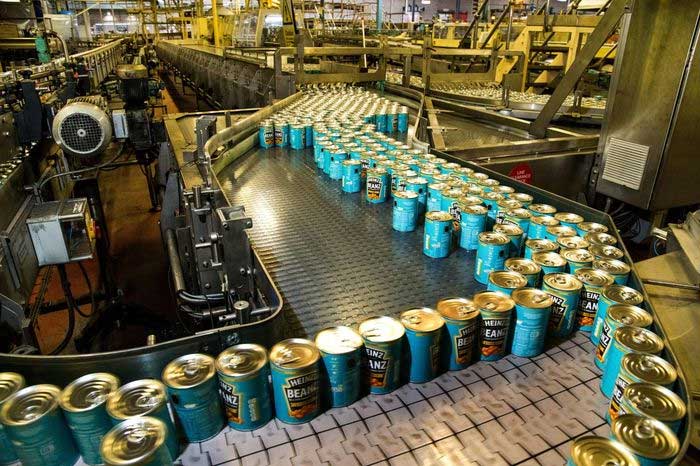Since the early 19th century, chefs discovered that sealing food containers could slow down the fermentation process. This led to the birth of the canning industry.
Chemistry has forever changed our perception of salt. However, it is the inventions in many other fields that have completely transformed the role of salt in the world. While salt for food will never become completely obsolete, it has gradually become less important since the Industrial Revolution began.
The first breakthrough came from a Parisian chef named Nicolas Appert. Though Appert made this important invention, few people knew about him. Some even thought his name might be Francois. As a confectioner, he believed that tightly sealing food in jars and then heating them would destroy the spoilage-causing agents, which he referred to as ferments.

A canning production line. (Illustration: Canmaker).
One of the first customers of Appert’s preserved food was the navy of Napoleon. In 1803, Appert convinced the navy to try his preserved broth, beef, and vegetables stored in glass jars using his heating and sealing process. The navy was very satisfied with this food. A report noted that beans and green peas, even without meat, retained all the freshness and flavor of freshly picked vegetables.
Anyone who has ever eaten canned beans or peas may be skeptical of this exaggeration, but for sailors who had never eaten fresh vegetables on long journeys, Appert’s food seemed like a miraculous invention. Grimod de La Reyniere, the leading culinary writer in France at that time, praised Appert’s dishes.
Appert’s 1989 book, The Art of Preserving All Kinds of Animal and Vegetable Substances for Several Years, was widely received and even translated into English. Just a few months after its publication, Peter Durand, a Londoner, was granted a patent for food preservation. He acknowledged that his idea came from an unnamed foreigner, who was likely Appert.
In fact, in 1807, an Englishman named Thomas Saddington demonstrated a similar process. However, what was significant about Durand was that he mentioned “tin and other metals” in his list of container types for preserving food, alongside glass and porcelain.
Bryan Donkin, an early British industrialist with foresight, perhaps recognized the potential of the tin can idea even better than Durand. In 1805, Donkin established Donkin, Hall & Gamble – the first canning factory in England, located across the Thames River from London. This place became a provider for many famous expeditions, such as Arctic explorations and those led by William Edward Parry in the 1820s.
At the end of the Napoleonic Wars, the British navy began experimenting with canned food from Donkin, Hall & Gamble. Initially, canned food was considered a special item for the sick, but by the 1830s, it became part of the general ration. Unfortunately, the can opener had yet to be invented. Sailors were issued a special type of knife to pry open the cans.
In 1830, a canning factory was established in La Turballe, a town that caught sardines located across the Guerande marshes from Le Croisic. The factory thrived, and gradually, most of the local pickled fish businesses could not compete with the canning industry. Over time, much of France’s Atlantic pickled fish industry disappeared. A similar fate befell much of the herring pickling industry in Northern and Southern Europe.




















































